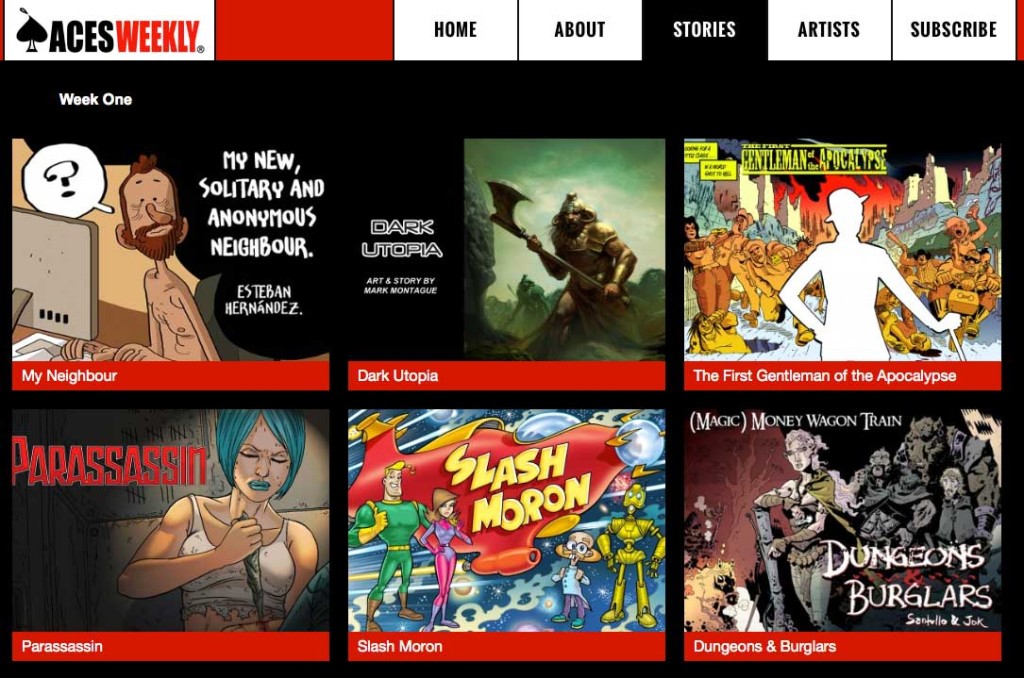I get a lot of questions from students in the UK and further afield about the British comics industry, so I’m posting some of my replies to often asked questions on this page. I hope it’s useful – but if there’s anything that isn’t covered, please feel free to ask me!
Last Updated: 14th November 2022
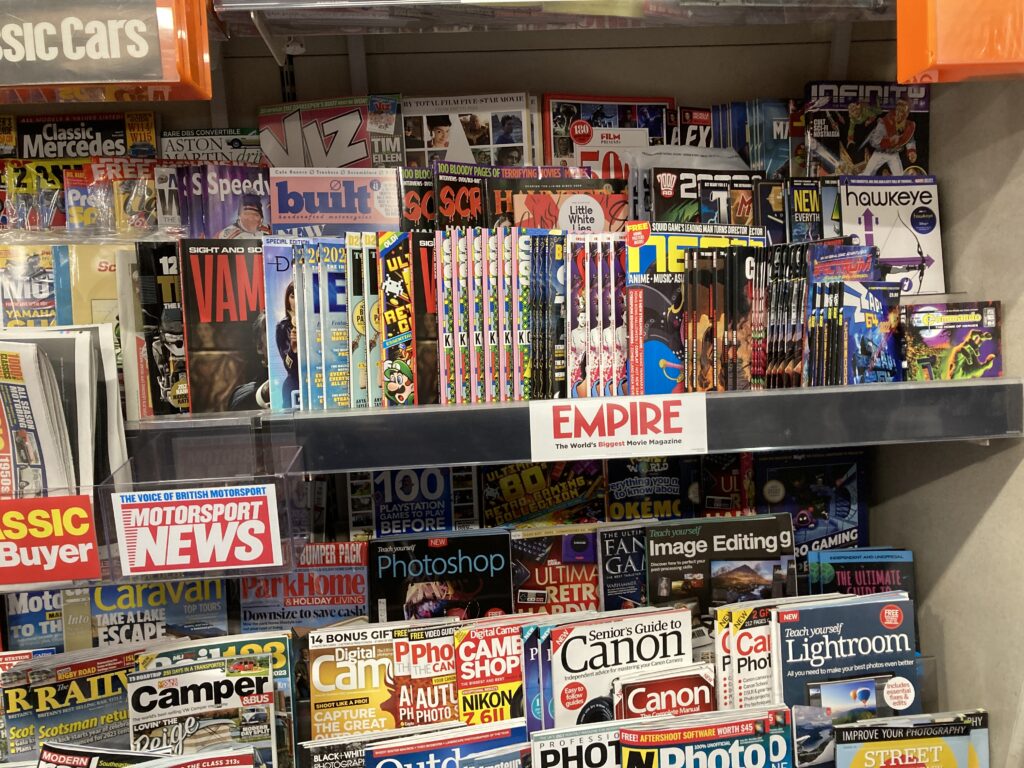
How Much is the UK Comic Industry Worth?
In 2011, Dundee University launched its MLitt in Comic Studies, akin to other courses it offered in gaming which have helped people get jobs in that industry. There was some debate about the value of the degree, prompted by remarks by Scottish Labour MP Tom Harris on Twitter (see news story). It was this debate that also prompted us to re-visit this page and first update it, not just in terms of sales figures but also pose the question – how much is the comics industry worth in the UK (and elsewhere)?
Strangely, although it’s easy to find figures indicating the value of other media industries – gaming, music, film, animation for example – the revenues generated by the UK comics industry in terms of employment, sales and related merchandise and tie-in product (films, TV and comic-inspired games, for example) are hard to quantify and ascertain.
Although news stand and direct sales of print comics are in decline in many traditional markets (not just the UK but the US, Europe etc) they do appear to be increasing in many developing countries with large, and young, populations and therefore huge potential markets. Collections and graphic album sales remain buoyant and the comics form continues to thrive online, and digital sales of comics – for PCs, iPad, Kindle and other devices – are a new factor in a complex equation.
In 2017, the Financial Times reported on the state of the Beano in an article focusing on its digital push, but the the feature also noted that despite reduced sales (in 2017, around 34,000 a week), subscriptions were on the increase, reflecting similar trends in the wider magazine publishing industry as publishers build their audience and gain more information about who they are thanks to data analysis.
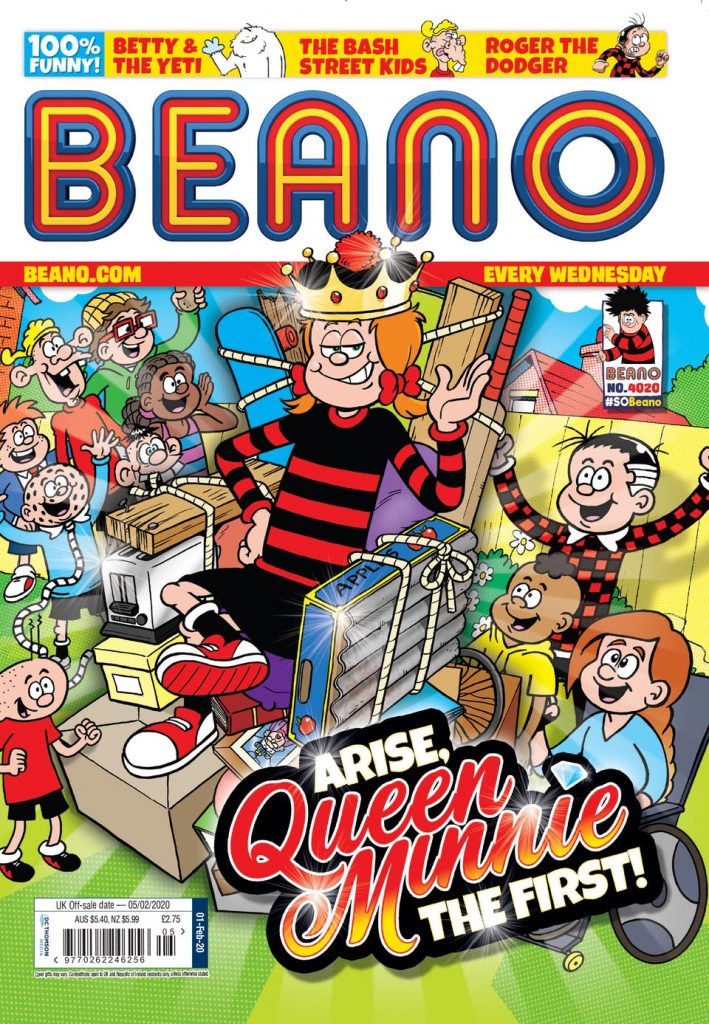
UK COMIC SALES FIGURES

UK news stand comics these days are generally led by licensed titles, often featuring few strip pages and many of them versions of material published for a number of Pan-European editions, but sales remain steady. Outside of the ongoing success of titles such as 2000AD, Beano and The Phoenix, original material has had mixed success. For example, Panini UK’s revamp of Doctor Who Adventures was well received in some quarters but failed to stem declining sales for the title that it had already suffered under its previous publisher. It was cancelled in 2017.
Similarly, while Thunderbirds are Go proved a TV success, the tie-in comic, published by DC Thomson, was not, perhaps the victim of a poor choice of editorial content at launch despite strong instore promotion. (The comic only began to run original stories based on the show late in its run).
“There are those who claim that Britain no longer has a comics industry,” notes British comics creator and archivist Lew Stringer in a 2015 assessment of news stand comics on his Blimey! It’s Another Blog About Comics blog. “This is very misleading. It’s true that the number of UK comics around are only a fraction of those in decades past, it’s true that several UK comics are full of American reprints, and it’s true that most titles in newsagents are merchandise-related publications with mostly feature based content that can’t really be called ‘comics’.
“However, originated comic strips do appear in some of those magazines (for example, TOXIC!, Mega, Doctor Who Adventures, Dennis and Gnasher’s Epic!, Doctor Who Magazine and Adventure Time).”
(Since publishing those comments, TOXIC has, sadly, gone reprint with its comic strips and titles including Dennis and Gnasher’s Epic! , later just EPIC, are no more).

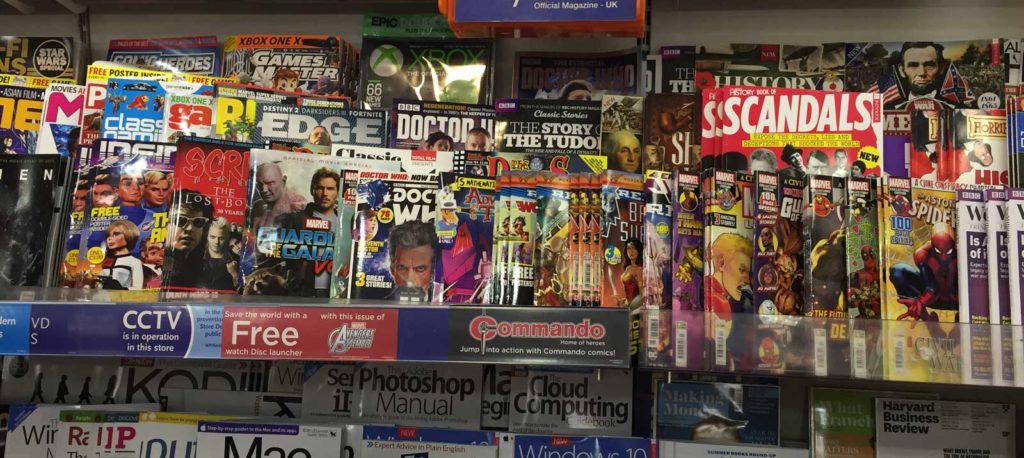
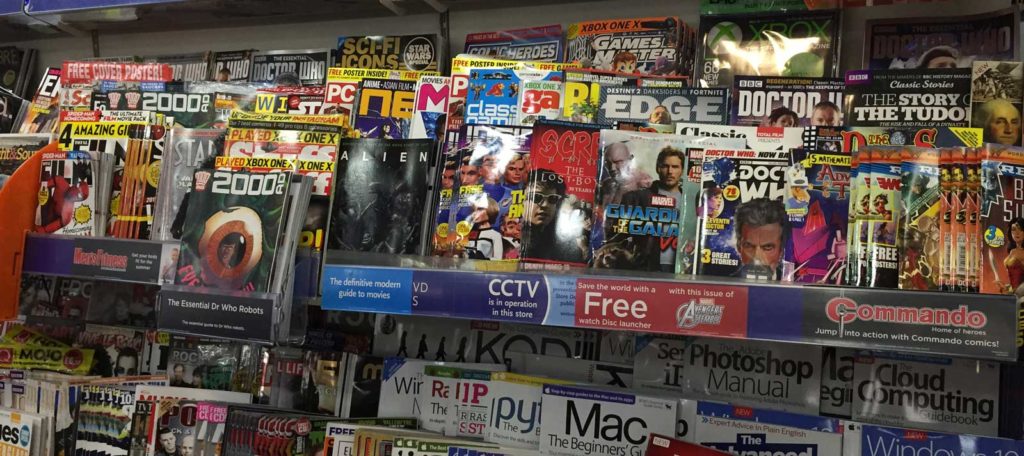
Sales of comics vary and are a far cry from the huge sales of the 1960s and 1970s. I have been documenting British comics news stand sales figures here since 2006 and here’s a link to the results. (Advertisers can also consult British Rate and Data, which publishes information on ABC-listed sales for all magazines in the UK, including comics).
Not every comic is ABC rated and I should qualify the sales data they gather by noting that for the publisher, the profitability of a comic or magazine is not simply based on its final sales, and certainly not its news stand sales alone. For those copies sold in a newsagent, through wholesale orders, the print run will of course have been higher, to ensure good distribution of the title in newsagents and supermarkets across the country. The actual percentage of sales of that print run – the sell through – is important, and the publisher will hope that those figures are at least 50% of the print run, if not more.
Since around 2017, the number of publishers reporting sales data to ABC has also declined, with many comic titles “No Longer Registered” – if they ever registered in the first place. Benefitting from direct relationships with customers afforded by online promotion and presence, some publishers now argue the ABC metric is not the key metric behind their subscription strategy and not how they measure success. In January 2020, the Telegraph Media Group, owners of the Telegraph newspaper, released their own digital and print subscriber sale data and announced they would no longer participate in providing ABC results. I suspect several other publishers may follow suit
Electronic Point of Sale (EPOS) has helped publishers ensure that sales of a title are maximised, a magazine’s stockist or distributor quickly able to adjust orders based on the sales of a current issue, and, hopefully redistribute copies to stores where a magazine where it has been a success in the hope of attracting new readers, rather than having it on sale where it’s not sold as well. However, this ability to adjust does mean that ‘visibility’ of a title decreases as far as the potential reader is concerned.
 Subscription Success Stories
Subscription Success Stories
Publishers will also want to raise money through subscription sales – and The Phoenix comic is a title that has used that model to the full, launched using a subscription model just like its predecessor, The DFC.
Initially, the Phoenix only limited distribution on the news stand (through Waitrose). and only began to expand its news stand distribution in 2015, on reaching Issue 200. Publisher David Fickling told me some time back that he felt the long term success of the title was through incremental, carefully decided expansion, rather than wide distribution, which is very costly for a small publisher.
A comic’s readership figures – like magazine readership, judged as more than the actual sales figures (usually by a factor of two or three) is also considered important as this will help the publisher sell advertising space, especially in titles with larger sales.
In recent years, publishers have actively promoted subscription sales – where once the number of Beano subscribers was minimal, ABC data in recent years suggests the high percentage of readers buying the comic that way play a major part in the weekly humour comic’s continued success. By 2019, sales of the title were once more over 45,000 an issue on average, on a par with sales some years back after a near disastrous fall-off.
If you are considering launching your own independent magazine, then this article on the Business of Fashion web site offers some general information on the subject – and MagazinePublisher.com has a guide to startups here.
How well did British comics used to sell when they faced little or no competition from rival media such as TV and games in terms of grabbing kids attention? There are some figures for 1960s and 1970s comic sales in the UK here.
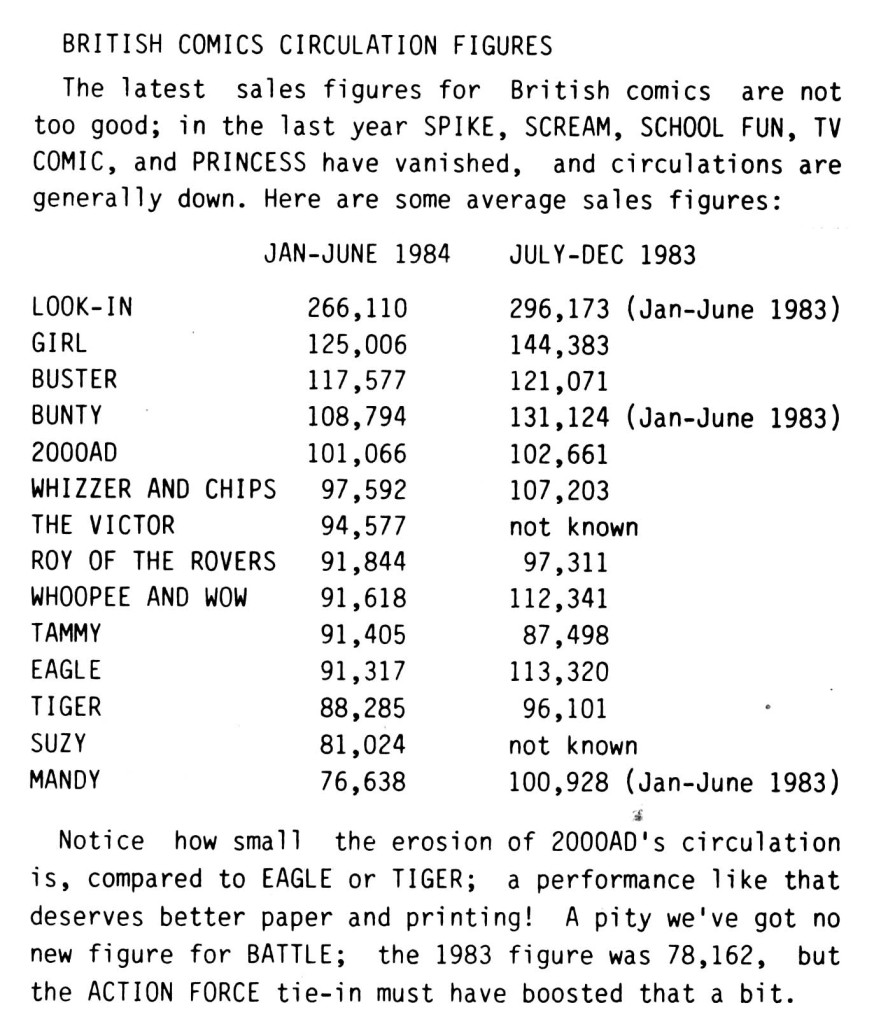
Pre-school and humour comics remain the top sellers: DC Thomson’s weekly Beano still does well, although The Dandy‘s 2011 revamp did not appear to re-ignite interest in any major way and the title went digital only (and then into apparent oblivion, sadly) in late 2012. Today, Beano Studios continues to promote the digital aspect of the Beano brand, but strangely the official site makes it hard to find information about the latest issue, which seems bizarre as this is a revenue stream for all its operations.
Egmont Fleetway have had ongoing success with TOXIC!, a predominantly feature-led boys’ title, but sales have declined in recent years. Immediate Media’s similar title, Mega, also sells well, but DC Thomson’s EPIC, the successor to BeanoMAX, launched in 2014 and re-branded after just eight issues, did not enjoyed the same success and has been cancelled. All connection with Dennis and Gnasher was dropped in 2016.
ABC Sales Data Does NOT Tell the Whole Story
As noted above, ABC figures are filed by the publishers themselves and not every comic on the British news stand is ABC listed. 2000AD, the last remaining originated weekly adventure comic not based on licensed properties, and Judge Dredd Megazine are notable exceptions, as are all of the titles published by Titan Magazines and most by Panini UK.
Estimated sales on 2000AD, vary wildly but are believed to be lower than 20,000, despite the continued efforts by publishers Rebellion to promote the title beyond their regular readership. DC Thomson’s last surviving pocket library title, the war comic Commando, also does not report but its sales remain strong, with four new issues released on a regular basis through the year.
The Phoenix Comic, like its predecessor, The DFC, which is also sold through Waitrose supermarkets, high street WH Smiths and some specialist comic shops is enjoying its success but again, does not publish sales figures.
Despite the uphill struggle and costs involved, smaller publishers are still trying their hand at getting new comics onto the market.
British Digital Comics
Many news stand titles are enjoying sales success beyond print with their digital editions. Every major title, including The Beano, Phoenix Comic, 2000AD, Commando, Mega and many others now all have digital incarnations, some offering value added extras only available in the digital edition – such as interactive games, live community interaction, video inserts and more.
Digital distribution has also enabled the publication of titles aimed solely at web and mobile device viewers, such as David Lloyd’s acclaimed digital anthology title, Aces Weekly, featuring a huge and diverse range of both comic creators and strips – serial episodes and short stories in seven-week volumes.
“We’re like the Sunday pages, delivered through your screen instead of your mailbox,” David explains. “Thrillers, sf, drama and humour in weekly bite-size chunks, looking luminescent and cool on any of your devices, and ready to read at the touch of a button!”
How Are British Comics Promoted?
News stand comics are rarely promoted through mainstream media in the UK, publishers preferring to promote the titles to retailers with increased spend on cover mounts. This has unfortunately led to many titles being “bagged” and sold as a product unseen by consumer at their sales point, particularly in supermarkets which have insisted on free gifts as part of the package in order for them to stock them. Bagging means potential readers cannot “try before they buy”, and instead sales are led by brand, and the appeal of a plastic gift.
Since supermarkets now over 40 per cent of publication sales, their demands have not gone unheeded by most publishers in order to secure a slot on their shelves.
UK Part Work Sales
In recent years, part work publishers have launched a number of comic strip-led part works, such as Horrible Histories and Jackie Chan Adventures. I do not have sales figures for these but part works companies enjoy high sales for these “collectable magazines”, which launch with a major promotional campaign and quickly go firm sale only, aiming to achieve a high subscription-based readership to ensure continued publication. Most part works are however usually only published for about two years before cancellation.
UK Small Press Sales
The UK has an energetic and enthusiastic small press, which has exploded with the arrival of print technologies that enable home printing using colour or black and white laser printing. Small print runs are now also more economically viable than they were in the past, thanks to digital printing.
Small press sales vary: I would advise anyone thinking about this to print a small number, like Selina Lock and Jay Eales do with The Girly Comic and Violent, then reprint to order. These two talented editors print 50 copies at a time of their comics, using their own laser printer which cost about £800 to buy.
Printing, say, 500 copies of an A5 fanzine with a colour cover could cost you about £1200 (in 2005). My advice would be to consider such an outlay very carefully unless you know you already have comic shops who will sell copies or have some other means of distribution. And always get more than one quote!
I would say small press publishers should recognise that producing fanzines is unlikely to make them rich, but the fun of doing it and the chance to promote your work in a published magazine can help you get professional work. It worked for me when I published SCAN back in the 1980s.
US Comic Books are also sold in the UK: although these days, only in specialist shops such as Forbidden Planet, Gosh, Comics Showcase and others. Our map of UK and Ireland Comic Shops features here on downthetubes and is updated regularly.
The sales of US comic books in newsagents is low, but Panini and Titan Magazines publish US-size reprints. Although WHSmith threatened to stop stocking these titles in 2004, they continue to sell well enough to have good distribution through the chain.
Supermarkets sell an increasing numbers of comics alongside other magazines but because of limited shelf space they do not sell a wide range of titles. Being stocked by Tescos or Sainsbury’s can, literally, be make or break for some comics titles. I’ve been told by more than one publisher that once a supermarket decides to drop a title, it is very hard to get re-listed.
Further Information about UK Comic Sales
If you want to know more about comics sales, you could try asking the publishers (although they are often cagey about releasing such information). Addresses can be found in The Writers and Artists Year Book.
You might also be able to extrapolate the success of a company’s comics from its accounts, which are available from Companies House.
International Comic Sales
There are some useful facts about comics sales on, of all things, a gospel web site, Christian Comics International. Despite the source (the site is run by COMIX35 / ROX35 Media, Inc., a non-profit, nondenominational ministry which has been organised for international Christian comics training) there’s some useful facts and figures to throw at people who say comics are dead, although the site includes a note advising that these pages have not been updated recently.
• Worldwide and general Comics Facts and Figures – General Introduction
• Comics in Multiple Countries and Multiple Languages
The Americas
• Christian Comics International: American Facts and Figures
Including Brazil, Colombia, Canada, Greenland, Mexico, United States, and the Americas in general.
• Comics Chronicles
This brilliant resource carries historical data on comics sales in the US as far back as the 1960s. It is slowly adding data for the 1970s etc. and has a lively discussion forum
• Marvel and DC Comics Sales Figures
Comics are a business and are driven by comic sales. Actually, that’s not quite true. Comics are driven by merchandising and marketing, but comic sales still matter. This page looks at overall sales for Marvel and DC, the two biggest US comic companies, and the historical reasons for sales going up and down, and how they could sell more comics today.
• ICV2
For the people on the front lines of the pop culture business, staying ahead of the trends isn’t something that can be left to chance – it’s a basic necessity for being successful. That’s why ICv2, which lists the monthly Top 300 is the Number One source of news and information for the buyers, gatekeepers, and tastemakers on the front lines in the US. ICv2 is where trend-watching has become a science.
• Search for “Top 300 Comics” for monthly sales figure reports through Diamond Distributors
• Search for “Top 300 Graphic Novels” for monthly sales figure reports through Diamond Distributors
Asia and the Far East
General Information: Christian Comics International: Asia Pacific (General)
Australia
See: Christian Comics International: Australia
Burma
See: Christian Comics International: Burma
Cambodia
See: Christian Comics International: Cambodia
China
More Info: Christian Comics International: China (including Hong Kong and Taiwan)
India
The Indian comic industry saw a decline in sale and readership from around the mid 1990’s to early 2004 but now the major publishers of comic books in the country are hoping for better days.
Sales per issue went down from 500,000 to almost 50,000-60,000 but are now again witnessing an upward trend according to Raj Comics owner, Manoj Gupta.
As in the US and UK, the Indian market is benefiting from digital sales which are developing fast. Today’s Indian Comic Culture: www.accu.or.jp/appreb/09/pdf34-1/34-1P006-007.pdf (PDF)
More Info: Christian Comics International: India
Indonesia
See: Christian Comics International: Indonesia
Japan
In Japan, manga still sells well, contributing some Y418.7 billion total in 2009 but the Anime News Network reported that magazine sales fell below Y200 billion for 1st time in 18 years.
In particular, sales of manga magazines fell 9.4% to 191.3 billion yen (US$2.12 billion). Manga magazines sales had not been below the 200-billion-yen mark in at least 18 years. Sales of print manga overall peaked in 1995.
Mobile phone sales of electronic books, including manga, grew 331.3% from 1.6 billion yen (about $14 million) to 6.9 billion yen ($58 million) in 2006. The Digital Content Association that reported in 2007 that the results expected sales to reach $100 million by year end.
More info: Christian Comics International: Japan
Malaysia
See: Christian Comics International: Malaysia
Papua New Guinea<
See: Christian Comics International: Papua New Guinea
The Philippines
See: Christian Comics International: The Phillipines
Singapore
See: Christian Comics International: Singapore<
South Korea
See: Christian Comics International: South Korea
Thailand
See: Christian Comics International: Thailand
Europe
• Christian Comics International: European Facts and Figures
Including Albania, Belgium, Bosnia, Croatia, Denmark, Finland, France, Germany, Italy, Kosovo, Netherlands, Norway, Portugal, Spain, Sweden, the UK and Yugoslavia.
• In 2005 the new Asterix album Le ciel lui tombe sur la tete, sold 800.000 copies in French in France and in Belgium the first three days of its launch according to the publisher as reported in www.actuabd.com.
• This 2006 round table discussion on the Forbidden Planet International blog focuses on UK comic sales. Participants were Dez Skinn of Comics International, Barry ‘Baz’ Renshaw of Engine Comics‘ journal Redeye, Rich Johnston of CBR’s Lying in the Gutters, Matthew Badham and John Freeman of Down the Tubes.
Norway
• The Norwegian Comics Market
This feature on downthetubes about the 2003 Raptus event in Bergen includes observations on comic sales
The Middle East
• Christian Comics International: Middle East and Africa
Including Bahrain, Egypt, Iraq, Kuwait, Lebanon, Mozambique, Oman, Pakistan, Qatar, Saudi Arabia, Somalia, South Africa, Syria, Tanzania, Tunisia, Turkey, and the United Arab Emirates
Who Reads Comics?
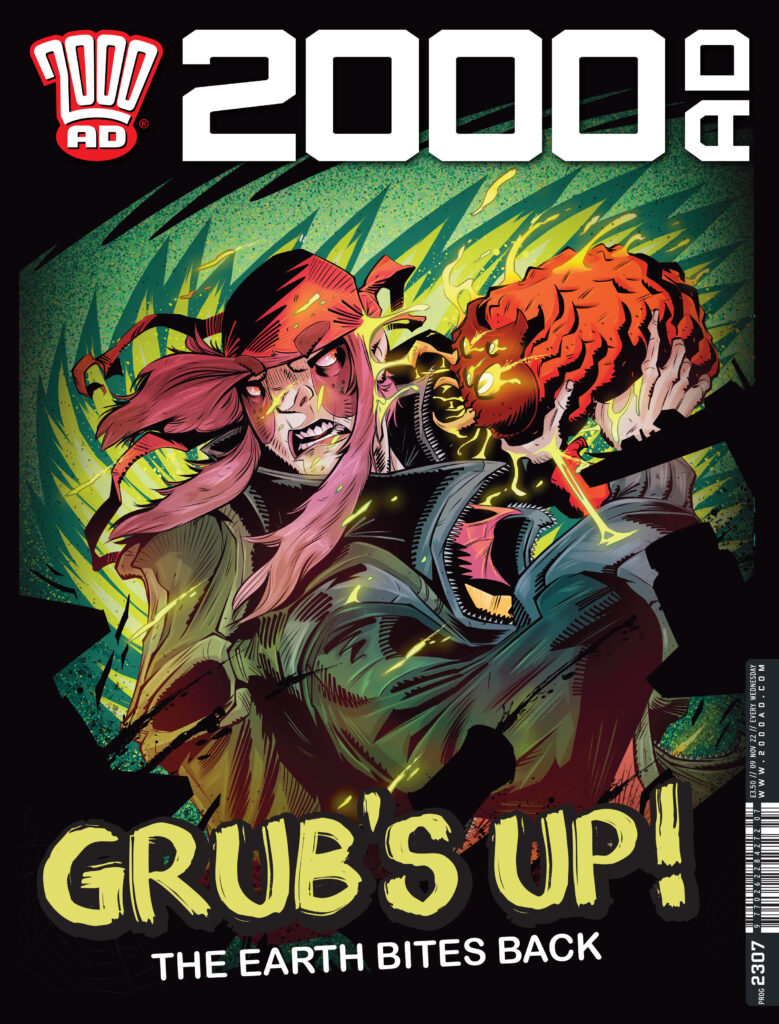
What is the sex and average age of people reading mainstream comics, graphic novels, and comics strips in newspapers?
I don’t think it’s any big secret that, excluding pre-school readers, the vast majority of comics readers are male. UK comics are aimed at children with different titles for different age groups.
There are very few comics aimed specifically at teenagers today – only 2000AD and Judge Dredd Megazine are on sale as the kind of boys adventure anthology title I grew up reading in the 1970s. Football comic Striker was cancelled in May 2005 after sales fell below 20,000 and, sadly, a crowdfunded revival did not have lasting success.
There are no teenage girl comics to speak of these days that have a wide distribution.
The only exception to this is the readership of manga. Many titles have a large female following and, just as the original material is created by many Japanese women, female UK manga fans happily create their won small press titles, often sold at anime rather than comics conventions.
The age range of comics readers buying comics in comic shops varies but I would say it’s teenager upwards with the real “hardcore” US comics fans in their late 20s and up — the generation who has easy access to such material (late thirties and 40s) are probably the most regular and committed comics buyers.
Graphic novels are now sold widely and depending on press coverage on release, some will reach beyond the readership of regular comics readers..Titles such as Fungus the Bogeyman and other Raymond Briggs books have huge readerships, as do books using comic strip to enhance their own narrative, such as Terry Deary’s Horrible Histories (a series which has also been published as a comic-led part part work).
Compilations of newspaper strips such as “Steve Bell’s If” from the Guardian will have a wider readership, too. Titan Books have published graphic novels for over 20 years with continued success, recently publishing a number of newspaper strip collections such as Modesty Blaise and James Bond.
Comic strips are also published in several newspapers, but as budgets tighten, many have been cancelled or are simply reprint. In 2020, only The Mirror still publishes almost a full page of strips, but only “Andy Capp” is new. Elsewhere, the number of strips is nowhere near as large of diverse as the number published via syndication in US or European papers.
What is the proportion of comics dedicated to a new readership?
Very few. As of June 2011, none of the major UK publishers whose magazine titles sell enormous numbers – such as Emap, IPC, Haymarket – had any plans to publish comics. The bottom line is that when you can publish a magazine title and sell, say 700,000 copies, there is no commercial sense (as far as these publishers are concerned) in publishing a comic that would sell perhaps 100,000 copies (based on the data they all have access to for comics sales, see above) and make a tenth of the profit.
Even if they did decided to publish comics tomorrow, it would still require editors and staff to be recruited for a new department, perhaps, and freelancers sourced, which for a large publisher could take between 18 months to two years.
On top of that, launching any title into the British news trade is costly. Retailers charge publishers to get their titles on their shelves and the cost of that for a new title could be anything between £18,000 to £25,000 (and up!). That’s even before your marketing campaign, which could cost as little as £25,000 but is usually much, much higher. It should therefore be obvious that publishers are not going to be enthusiastic about launching a title which, as far as they can see, will not have the sales potential of their hugely successful magazines.
This is one reason why many comics titles feature reprint material from the US or elsewhere, in order to minimise editorial costs.
Are comics and graphic novels are enjoying a greater level of acceptance than previously?
Graphic novels are certainly getting a lot more shelf space than they used to – which is good news. Certainly in the US many books are getting plenty of exposure in the mainstream press — not often afforded them here in the UK, though! You can check www.icv2.com, a US retailers news site, which runs news items on mentions for graphic novels in the New York Times and the like.
Are they more accepted? Hmm. I still think there’s a lot of snobbery about comics from certain quarters in the UK which you don’t find on the continent or in countries like Japan or the US. There still seems to be a prevailing attitude that comics are for kids, not adults, despite the work of writers like Alan Moore, Neil Gaiman, Grant Morrison and many other UK creators.
Are more people reading graphic novels?
Yes – more people do seem to be reading graphic novels than the comics that spawned them, i.e. they are buying collections of many comics, as well as original graphic novels. Manga is now extremely popular in the UK, just as it is in the US and the continent.
Are more older people reading graphic novels?
I think more adults read graphic novels, probably because they grew up with comics whereas today’s youngsters haven’t, because there are no weekly comics as there were until the early 1990s. Yes, there are plenty of comics out there (see above) but most are either aimed at the pre-school of very young and anything aimed at teenagers — 2000AD, the Panini reprints of superheroes, Titan’s Batman Adventures and Star Wars Comic — do not have the huge readerships of the past.
James Hill, who was Editor in Chief at the now defunct Oldham-based comics company Toontastic feels that in part this is because youngsters today are getting their narrative from other sources — TV, the web, games, music videos — and comics can’t compete.
How Can You Sell Comics, When the Potential Audience doesn’t know what they are?
I think it’s also down to the fact that most youngsters don’t know what comics are any more — certainly not adventure comics, anyway. Jason Kingsley, owner of 2000AD, once told me they were doing a promotion at a skateboard event one time and a teenager picked up one of the freebies and started to flick through it. The conversation went something like this:
“What’s this?”
“It’s a comic.”
“Cool… what’s a comic?”
“It’s a magazine that tells stories with words and pictures. The story’s told using speech balloons, see–”
“What a brilliant idea! Who thought of that! It’s really cool!”
So, not only are publishers trying to sell comics to people who know what they are and convince them they’re comic is worth buying, they’ve also got a hard slog actually selling comics as a medium by all accounts – certainly to the teenage audience who would be the most likely to buy them and make them hip. Not that this can’t be done, but when the PR budgets of most comics companies is a fraction of what Nike or Sony can throw into an advertising campaign, you can see comics publishers have their work cut out for them.
Of course, comics isn’t just about the ones you buy – as culture, comics creators have taken to the web like ducks to water and there’s a tremendous amount of talent out there with a worldwide reach they would never have got simply publishing a fanzine sold to comics fans at a Comic Mart or, if they’re lucky, in their local comic shop. That’s a very exciting aspect of comics storytelling right now, and you can create comics in many different ways on the web without losing sight of the fact that they’re comics. The UK small press is increasingly gathering strength and confidence, despite smaller sales than titles that do make it to the news stand.
One of my readers Jonathan Clegg asked me if I thought that critics have begun to embrace the comic or graphic novel as a legitimate form? “I know that critics fell all over themselves to praise the work of Chris Ware and Joe Sacco, and Paul Auster’s work,” he asked, “but is this indicative of a wider critical acceptance from people who wouldn’t previously have considered the comic book a worthwhile medium?
No – I still think there’s a lot of snobbery about comics from the “critics”. They should listen to Phillip Pullman and stop being so snooty.
“And if either of these things are true, then why?” Jonathan asked. “Do you think that comics and graphic novels have changed substantially over the past decade? Have they been affected by changes in, for instance, film and TV?
Comics are a different form of storytelling to film and tv and they have an entirely different way of presenting narrative. Someone – I think it was Will Eisner – once said that comics storytelling is about the space between the frame not just the frames themselves. Yes, a lot of comics creators have borrowed heavily from film and tv storytelling but to me this slows down the storytelling whereas comics can be sequential without tracking a character’s actions from the moment he walks out his front door to the moment he walks into a bar, as you might with a film. You can jump from a character walking out of his house straight to the bar and if he’s with someone, they can still be having the same conversation. I’d recommend looking at Frank Miller’s Daredevil or Eisner’s comics storytelling books to understand what I mean by this if you’re intrigued.
Jonathan Clegg again: “I recently read Stan Lee’s foreword in the re-issue of Marvels, and he said that, looking back on the book, he thought it marked a point at which comics began to focus on more mature, human stories. Do you think they have done this? And if so, who is responsible?”
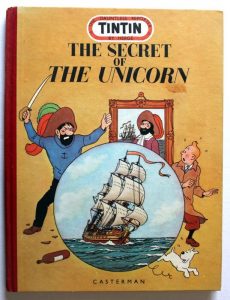
Comics have always been about human stories. In some ways, the move in superhero comics to this kind of storytelling has taken all the fun out of the genre, something Alan Moore recognised when he started the ABC Comics line and started having fun with Tom Strong.A French comics creator will find this train of thought very odd of course, because there have always been “adult” comics on the continent – as well as those strips British people recognise such as Tintin and Asterix.
Jonathan Clegg again: “What accounts for what I’d call the ‘hipness’ of comics nowadays? By which I mean that comics seem to be everywhere – from the latest hot American teen sitcom, The OC, to Michael Chabon’s award winning novel, The Amazing Adventure of Kavalier and Clay, to a whole host of comic book movies hitting the big screen (The Fantastic Four for example, but also less well-known titles like American Splendor, Ghost World and Hellboy) – what’s driving this?”
The simple answer – the people who are making these shows grew up with comics and want them in there, somehow! As for the films – the honest answer is that film companies recognise a “brand” like Superman or the X-Men as a potentially big box office draw and want to exploit that. Modern visual effects have finally caught up with what superheroes could only do in comic books, and so you’re seeing more superheroes — even ones that have never appeared in comics like Columbia’s Tonight, He Comes, a dark superhero tale written by Vincent Ngo, which will star Will Smith.
This has happened before – don’t forget comics in the US didn’t use to be just about superheroes. You had romance comics, horror comics (until they were banned and then gutted by the censors), westerns… as soon as TV and film started making those kind of stories, the comics seem to have started to suffer – although of course comics publishers have also published comics in response to film and TV.
John Freeman
Compiled with thanks to and information supplied by publishers and with useful notes from the likes of Jeremy Briggs, Michael Molcher, Richard Sheaf, Lew Stringer and others
